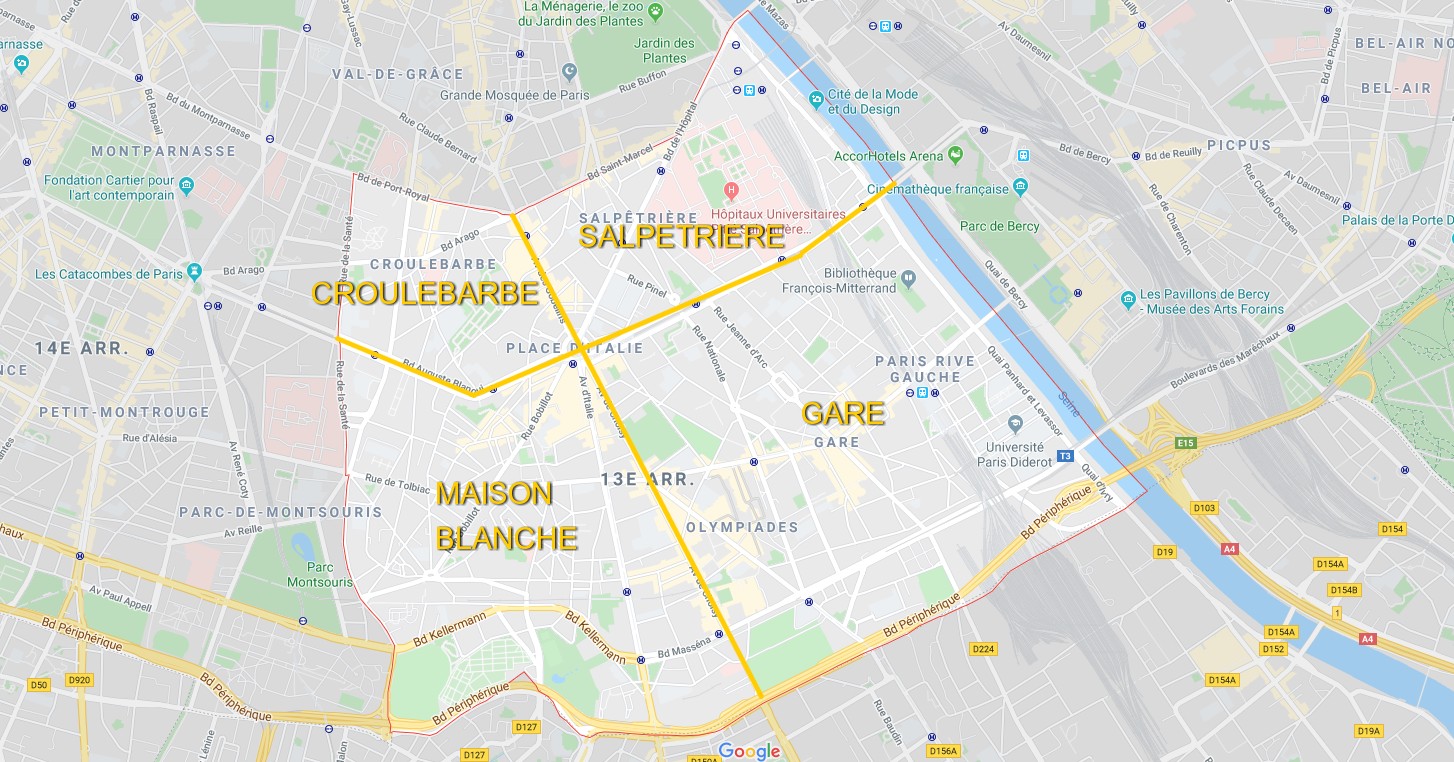The northern part of the arrondissement (beyond boulevards Auguste Blanqui and Vincent Auriol) was incorporated into the Fermiers Généraux enclosure in the 18th century. The faubourg Saint-Marcel, one of the poorest in Paris, developed as tanners and dyers settled on the banks of the Bièvre. It wasn’t until the mid-19th century, under Louis-Philippe, that a new fortified wall was built. The Thiers enclosure then encompassed the entire 13th arrondissement. The faubourg Saint-Marcel became a working-class arrondissement.
Butte-aux-Cailles was originally a hill covered with vineyards and meadows. In the 17th century, the area became unhealthy due to industrial activities using water from the Bièvre. By the end of the 19th century, the Bièvre had been covered over and housing had developed away from the Haussmann standard. This was due to the limestone quarries, which still prevented the construction of heavy buildings. Inspired by Le Corbusier, the part of the arrondissement south of the Place d’Italie was transformed after the Second World War. In the early 90s, major works were undertaken in the eastern 13th arrondissement, with the construction of the Bibliothèque Nationale de France and the vast new Paris Rive Gauche arrondissement.

 Choose an arrondissement
Choose an arrondissement










